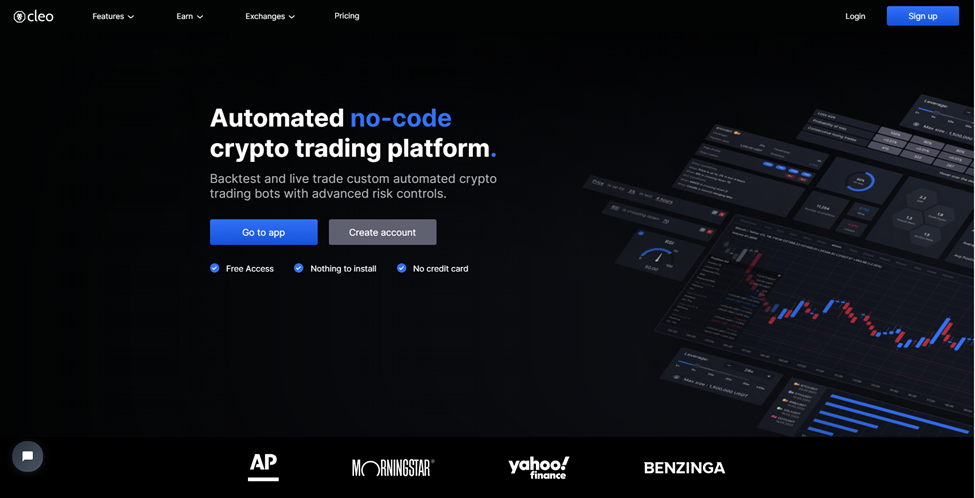New Info For Picking Forex Trading
Why Not Test Your Strategy Across Multiple Timeframes?To determine the reliability of a trading system, it is crucial to backtest with different timeframes. This is because different timeframes offer various perspectives on market trends or price movements. When a strategy is tested back using a variety of timeframes, traders will gain more insight into how the strategy performs under different market conditions, and can determine whether the strategy is consistent and reliable over a variety of time horizons. For example, a strategy which performs well on a daily basis might not be as effective when tested on a longer time frame , such as the monthly or weekly. If you backtest the strategy using both daily and weekly timeframes, traders can identify any potential inconsistencies in the strategy and make adjustments when needed. Backtesting multiple timeframes also has the advantage in helping traders choose the most suitable timeframe for their particular strategy. Backtesting with different timeframes could be beneficial for traders with different habits of trading. This helps them identify the most suitable timeframe for their particular strategy. When backtesting multiple timeframes, traders gain a better understanding of the strategy's effectiveness, and can make more informed choices regarding the reliability and consistency of the strategy. View the best what is backtesting for site advice including backtesting, online trading platform, position sizing, automated trading software free, automated forex trading, crypto strategies, backtesting platform, backtesting software free, backtesting trading strategies, best forex trading platform and more.

Backtesting Multiple Times Is A Fast Method Of Computing.
It's not more efficient to backtest multiple timeframes, but it's just as easy to backtest only one timeframe. Backtesting on different timeframes is essential to ensure the strategy's reliability and ensure consistency in performance across various market conditions. Backtesting multiple timesframes is the practice of using the same strategy across different timeframes (e.g., daily or weekly, and even monthly) and then analyzing the results. This allows traders to get an overall view of the strategy's performance. It also allows you to find weak points and inconsistent results. It is essential to note that backtesting on multiple timeframes can make the process more complicated and can take longer. It is essential to take into consideration the trade-off between potential benefits and the increased timeand computational demands of backtesting. Backtesting multiple timelines does not always make it faster for computation. However, it is a useful tool to verify the reliability of a strategy and to ensure consistency with markets. When deciding whether to backtest different timeframes, traders must be aware of the tradeoff between possible benefits and additional time and computational requirements. Check out the best what is algorithmic trading for site examples including backtesting platform, algorithmic trading strategies, algorithmic trading software, forex backtest software, automated trading systems, algorithmic trading crypto, auto crypto trading bot, crypto trading backtester, stop loss in trading, forex tester and more.

What Backtest Considerations Are There Regarding Strategy Type, Elements And Number Of Trades
You need to be aware of the following key factors when backtesting strategies: the strategy type and its elements; and the amount of trades. These aspects can affect the outcome of the process of backtesting and must be taken into account when assessing the performance of the strategy.Strategy Type- Different types of trading strategies, including trend-following, mean-reversion, and breakout strategies, each have different assumptions and behaviours on the market. It is important to be aware of the type of strategy you choose to use that will be backtested, and to select historical market data that is suitable for that type.
Strategies Elements- These elements such as the rules for entry and departure as well as the position sizing, risk and management can influence the outcomes of backtesting. When evaluating the strategy's performance it is essential to be aware of all elements and make adjustments when necessary to ensure the strategy is stable and stable.
Number of Trades The number of backtests can affect the outcomes. While large numbers of trades offer an extensive view of the strategy's performance, they can cause more computational demands. A lower number of trades could allow for faster backtesting but not provide a comprehensive overview of the strategy's performance.
To get accurate and reliable results, traders should consider the kind of strategy they are using and the elements when testing trading strategies. These aspects can assist traders evaluate the strategy's effectiveness and make informed choices about its reliability. Have a look at the best divergence trading for blog info including backtesting, what is backtesting, crypto trading strategy, algorithmic trading bot, algo trade, automated trading, automated trading platform, backtesting trading strategies, algo trading software, algo trading software and more.

What Are The Criteria For Passing For Performance, Equity Curve And The Number Of Trades?
There are several key criteria which traders may use to assess the strategy's effectiveness by backtesting. These criteria include the equity curve, performance indicators, and the number trades. It's a key indicator of the performance of a trading strategy because it gives insight into the overall trend of the strategy's success. This is a criterion that can be met when the equity curve exhibits consistent growth over a time frame with few drawdowns.
Performance Metrics: Aside from the equity curve, traders could also look at other performance indicators when evaluating trading strategies. The most popular metrics include the profit ratio Sharpe rate, the maximum drawdown, the average time to trade and the highest profit. The strategy could meet this criterion if the performance indicators are within acceptable limits and demonstrate consistent and reliable performance over the period of backtesting.
Quantity of Trades- The number of trades that are executed during the process of backtesting can be a crucial factor when evaluating the performance of a strategy. If a method generates enough trades in the backtesting time to provide an accurate report of its performance it might be thought to be in compliance with this requirement. However, it's important to keep in mind that a high number of trades may not necessarily suggest that the strategy is effective, since other aspects, such as the quality of the trades, should also be taken into consideration.
The equity curve and performance metrics, as well as trades, and number of trades are all crucial elements in evaluating a trading strategy's performance through backtesting. This will allow traders to make educated decisions on whether the method is durable and reliable. These criteria help traders better assess their strategies and make changes to enhance their performance.